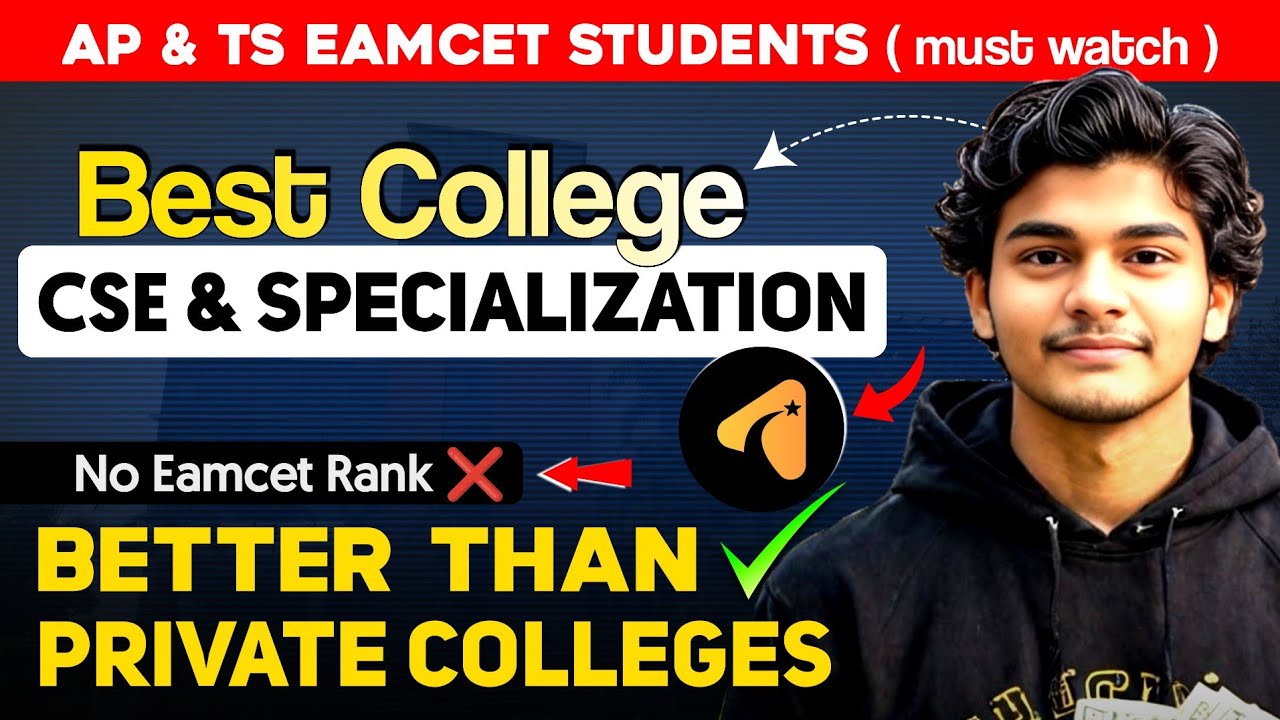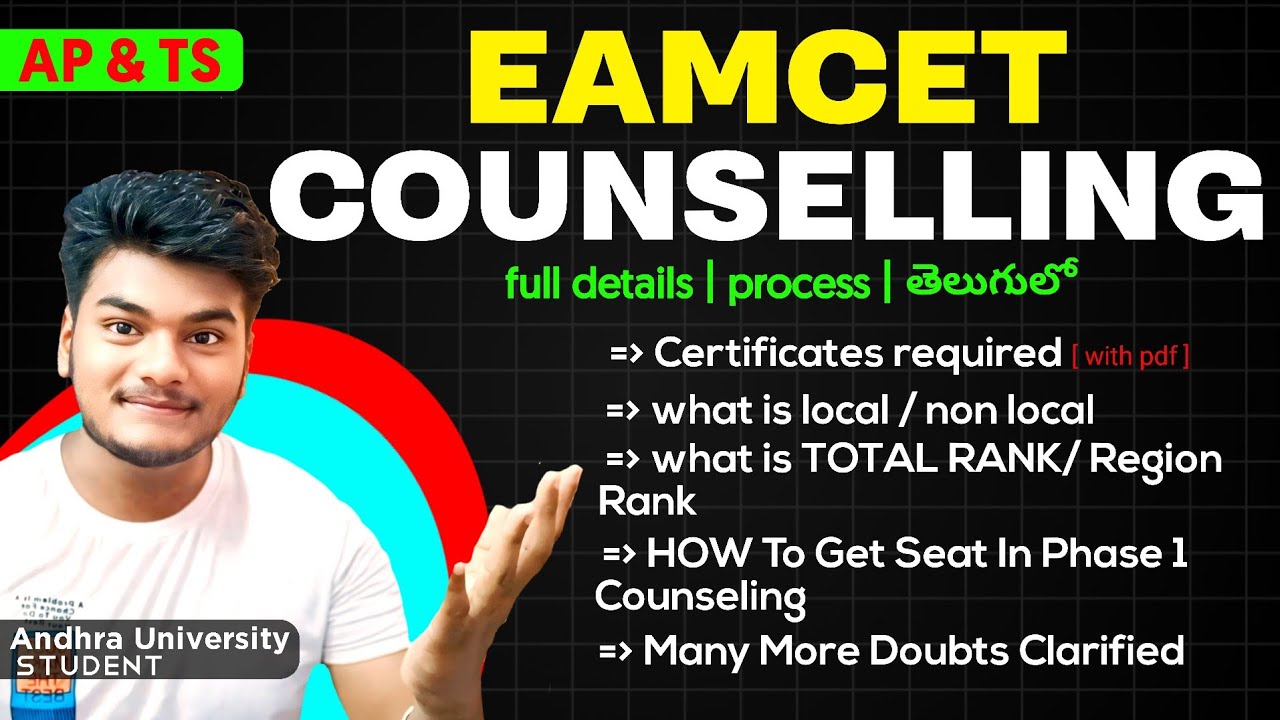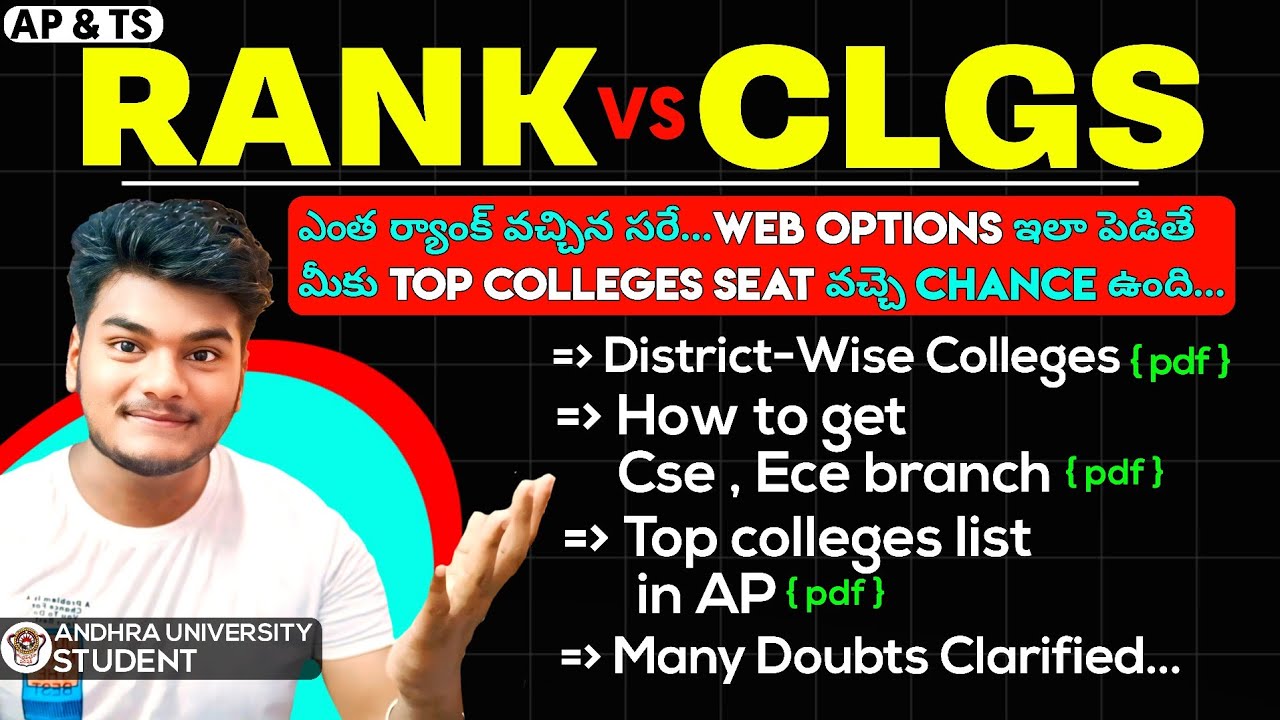How To Get Seat With Out Eamcet Ap & Tg

how to get an engineering seat in Andhra Pradesh without taking AP EAMCET. We’ll cover different pathways—management/NRI quota, lateral entry via ECET (diploma route), and entrance via other exams (like JEE, VITEEE)—with practical steps, requirements, cost comparisons, and tips to help readers navigate non‑EAMCET admissions.
🎓 1. Why Explore Non-EAMCET Routes?
Most engineering seats in Andhra Pradesh are filled through AP EAMCET counselling (Category A). However, 30% of seats—the so-called B‑category—are reserved for Management/NRI quotas, and colleges may also accept JEE Main, college entrance exams, or lateral entry via AP ECET/ Diploma. This makes it possible to enroll without taking AP EAMCET .
🧭 2. Pathways to Admission Without EAMCET
A. Management / B‑Category Quota
Most private colleges (AICTE‑approved) reserve 30% of seats for management quota, split among General seats, NRI quota (≈15%), and sometimes supernumerary seats. These require:
- 50%+ in PCM at 10+2 (minimum academics) .
- College-based merit lists—usually class XII marks or other exams (JEE Main/VITEEE).
- Payment of higher fees—typically ₹1–3 L/year. E.g., ABR CET, Aditya College allow admission sans EAMCET .
- Colleges publish separate notifications—apply direct, seats are filled at college level.
Example:
“ABR College … offers admission … through the Management Quota … 30% of total intake … without EAMCET”.
B. NRI Quota Seats
Some colleges (especially minority ones like Muffakham Jah CEGT) and private institutions reserve ~15% seats under NRI category. Eligibility typically demands:
- Completion of 10+2 or equivalent in foreign curriculum.
- Payment of high fees—NRI seats are ₹1–2 L+ per year .
- No entrance test—admission based solely on qualifying marks.
“MJ College … remaining 25% seats are filled by … NRI candidates … based on successful completion of 10+2 years” .
C. Direct Admission via National/Institutional Exams
Some institutes (e.g., VIT-AP, GITAM, KL University) allow entry through:
- JEE-Main / VITEEE / college — entrance exam.
- Often this route coexists with AP EAMCET seats .
- Admissions criteria are detailed on college websites—for example, VIT-AP accepts VITEEE and +2 marks .
D. Diploma → Lateral Entry (AP ECET Route)
Students with a 3-year engineering diploma can access the 2nd year of B.Tech via lateral entry:
- 10% of seats in each branch are reserved for ECET mode or diploma entry .
- This requires passing AP ECET exam (for diploma holders) .
- If diploma holders prefer not to take ECET, some colleges allow direct lateral admission based on merit, especially for leftover seats .
- Entry allows skipping the first year of engineering, reducing cost/time.
🚦 3. Comparing Different Pathways
| Path | Requirement | Timeline | Fees | Pros/Cons |
|---|---|---|---|---|
| Management Quota | 50% in PCM | Jun–Aug | ₹1–3 L/yr | No EAMCET, branch choice; expensive, variable seat quality |
| NRI Quota | 10+2 + NRI status | Jun–Sep | ₹1.5–3 L/yr | High fees, exclusive branch access |
| JEE/VITEEE Route | Entrance exam | Apr–May | ₹1–2 L/yr | Lower fee than management; early admission |
| Lateral Entry (ECET/Diploma) | Diploma + ECET | Jul–Aug | ₹60k–1.5 L/yr | Skip 1st year, quota available; needs diploma |
📝 4. Step-by-Step: Getting a Seat Without EAMCET
4.1 Management / NRI Quota
- Research colleges with strong management quotas (e.g., ABR, Aditya, GVPCE, GITAM).
- Check requirements: usually 50%+ in PCM/XII, but may accept JEE/VITEEE ranks.
- Collect documents: 10th, 12th, caste/income (if needed), Aadhar, photos, etc.
- Apply directly at college—online/offline forms—pay fees, submit docs.
- Respond to merit lists, choose branch, confirm admission by paying seat booking fee.
- Report to college with originals and payment.
✔️ Tip: Apply early—seats fill fast by July. ABR, Aditya websites confirm management route .
4.2 NRI Quota
- Check NRI seat policies—often 15% of intake.
- Collect eligibility: Not “non-resident Indian” need, but overseas education +
10+2 marks . - Apply with documents and fee (usually DD).
- Once selected, pay full fees of ~₹2 L+/yr, then report.
4.3 JEE / Institute Entrance Exams
- Know your target exam: VITEEE, JEE Main, college-specific tests.
- Register early, prepare well—some overlap with +2 exams.
- Apply based on rank for college admission—not EAMCET counselling.
- Secure fee payment and enrollment.
4.4 Lateral Entry via Diploma
- Complete diploma in engineering (AP Board).
- Register for ECET exam (usually April).
- Get around 10% seats in B.Tech 2nd year, counseling via ECET merit lists.
- Alternatively, in some colleges, you may be eligible for direct lateral admission if seats remain .
🧠 5. Category & Reservation Benefits
Although AP EAMCET offers category-based reservations, management/NRI routes do not. However:
- Colleges may offer lower fees or scholarships to BC/SC/ST students via the Fee Reimbursement Scheme (AP Govt) .
- Students from minority communities may also access special quotas in institutions like MJ College via NRI route or Muslim minority seats .
🎒 6. Costs & ROI Comparison
| Route | Annual Fee | Total 4-Year Cost | Financial Aid |
|---|---|---|---|
| EAMCET Convener | ₹60k–2 L | ₹2.4–8 L | Full reimbursement (BC/SC/ST) |
| Management Quota | ₹1–3 L | ₹4–12 L | Scholarship varies |
| NRI Quota | ₹1.5–3 L | ₹6–12 L | — |
| JEE/VITEEE | ₹1–2 L | ₹4–8 L | May offer merit scholarships |
| Lateral Entry (ECET) | ₹60k–1.5 L | ₹1.2–6 L (3 years) | — |
ROI Tip: Management/NRI cost must be offset by strong placement—only consider these routes if budget allows.
👎 7. Pros & Cons Breakdown
Management / NRI Quota
Pros:
- No need to crack EAMCET
- Choice of college/branch
- Admissions usually guaranteed if criteria met
Cons:
- Higher cost
- Diverse quality of colleges
- Limited reservation benefits
JEE / Institute Exams
Pros:
- Merit-based
- Cheaper than management
- Early admission
Cons:
- Competitive exams
- Limited seats in Andhra institutions
Lateral Entry (Diploma/ECET)
Pros:
- Skip first year
- Lower overall cost
- Good option for diploma students
Cons:
- Need ECET qualification
- Limited to diploma holders
✅ 8. Final Strategy for Students
- EAMCET not mandatory—choose pathway based on rank (or lack thereof).
- Gather documents early and check application timelines (April–August).
- Aim for scholarships (AP fee reimbursement, college merit awards).
- Compare ROI—juxtapose cost vs placement and brand value.
- Think ahead—if using diploma lateral entry, factor in career timeline.
🧩 9. Real Student Stories
“ABR … offers admission … through the Management Quota … 30% of total intake … without EAMCET”.
At MJ College, “r emaining 25% seats … are filled by … NRI candidates … based on 10+2 .
Reddit user:
“Minority Engineering colleges offer seats to BCE students even if they have failed EAMCET, try to personally contact the college admission authorities” .
📣 10. What to Watch Out For
- Check the legitimacy of less-known colleges—inspect accreditations (NBA, AICTE).
- Beware of hidden/donation fees—ask for full financial breakdown.
- Prioritize placement records and infrastructure—a high fee only makes sense if placement prospects are good.
- Attend college open days or virtual tours to assess campus environment.
🌟 11. Your Next Steps
- Choose your route: management/NRI or ECET/lateral.
- Shortlist colleges based on budget, location, and branch.
- Secure all documents: 10th, 12th, Aadhar, passport photos, Caste/income certificates.
- Apply early: June–July is prime season; don’t wait.
- Evaluate admission offers: consider scholarship, infrastructure, placement.
- Confirm seat and complete admission paperwork.
✅ Final Thoughts
You don’t need AP EAMCET to study engineering in Andhra Pradesh. With clear alternatives—management, NRI, entrance exams, and lateral entry—students can still pursue their goals. Just pick the best route, plan early, compare fees versus outcomes, and make an informed, confident decision.



